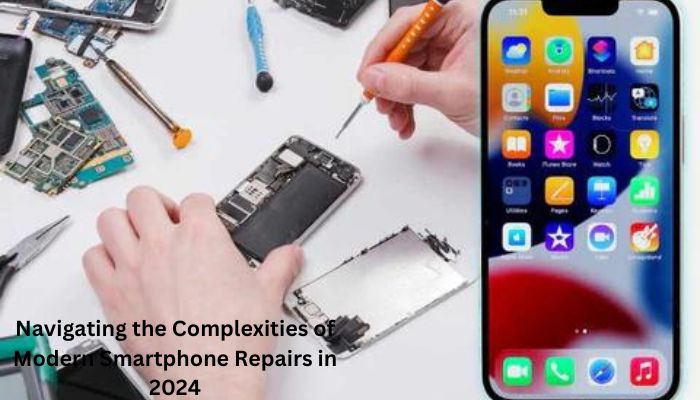Mobile phone repair is a comprehensive process that goes beyond replacing broken screens or batteries. It involves diagnostics, troubleshooting, and precise technical work. The first step is to accurately diagnose the issue, which can be related to software, hardware, or user-induced damage. Diagnostic tools, such as the battery, motherboard, and sensors, are used to assess the phone’s health, speeding up the diagnosis and ensuring accurate identification of the problem, which is crucial for effective repair.
The longevity of mobile devices is a growing concern due to issues like software glitches and hardware damage. Understanding the science behind phone repairs can help users make informed decisions about maintaining and extending their devices’ lifespan.
Examining the Repair Procedure
After identifying the issue, repair work begins, ranging from simple tasks like replacing screens or batteries to complex tasks like soldering a motherboard or recovering data from a damaged device. Each type of repair requires unique skills and tools, and understanding these can help demystify the process. Hardware issues involve component replacement, such as screens, buttons, and batteries, while software issues involve the operating system, apps, or firmware. Technicians use software tools to flash the device, update or re-install the operating system, clear the phone’s memory, or update settings to enhance performance and fix glitches.
Best Practices for Smartphone Repairs
Regular backups are crucial for computer and smartphone repairs, as data loss can occur unexpectedly due to hardware failures, software issues, or cyber-attacks. Utilizing cloud services or external hard drives ensures data security and accessibility. Quality replacement parts are essential for device longevity and performance, and avoiding cheap, low-quality parts can cause further damage. Reliable components for your repair needs may be obtained from reputable vendors and repair providers like Spark providers.
Software updates are essential for security and functionality, including patches for security vulnerabilities, bug fixes, and performance improvements. Keep your operating system, applications, and antivirus programs up to date to minimize potential software-related problems. Proper handling of devices can prevent common issues that lead to repairs, such as dropping or exposing them to extreme temperatures. For computers, ensure stable surfaces and avoid liquids. Purchasing screen protectors and protective cases can help lower the possibility of physical harm.
When needed, seek professional help, as DIY repairs can sometimes do more harm than good. The knowledgeable experts at Spark Services have the resources and know-how to quickly identify and resolve issues. Regular maintenance is key to preventing major issues that require repairs, such as cleaning dust from internal components, checking for software updates, and running antivirus scans.
Security should always be a top priority when dealing with computer and smartphone repairs. Make use of two-factor authentication, create secure passwords, and stay away from downloading dubious programs or software. Regularly update security settings and be cautious of phishing attempts to prevent issues that could lead to repairs, such as malware infections or unauthorized access.
The Difficulties of Repairing Modern Devices
Modern Smartphone Repair Challenges
• Complexity of modern smartphones with sensors, circuit designs, and proprietary components.
• Limited availability of spare parts due to proprietary components.
• Technicians need to update skills and tools to adapt to new technologies.
• Repairing extends phone lifespan, saves money, and promotes sustainability.
• Reducing electronic waste and ecological impact of new device production is crucial.
The Future of Repairing Cell Phones
The future of mobile phone repairs is promising, with advancements in diagnostics and repair techniques. As consumers become more aware of the benefits of repairing over replacing, demand for skilled repair services is expected to rise. Emerging technologies like artificial intelligence and machine learning are enhancing diagnostic efficiency and accuracy. As the repair industry grows, professional training programs are needed to equip technicians with necessary skills and ensure high standards of repair work, keeping up with the increasing complexity of mobile devices.
Conclusion
Mobile phone repairs are a fascinating field that utilizes technical skills, advanced tools, and modern technology. Each repair task contributes to device longevity, reducing waste and contributing to a more sustainable future. By investing in repairs, consumers can enjoy their devices for extended periods and reduce waste. Read Also
